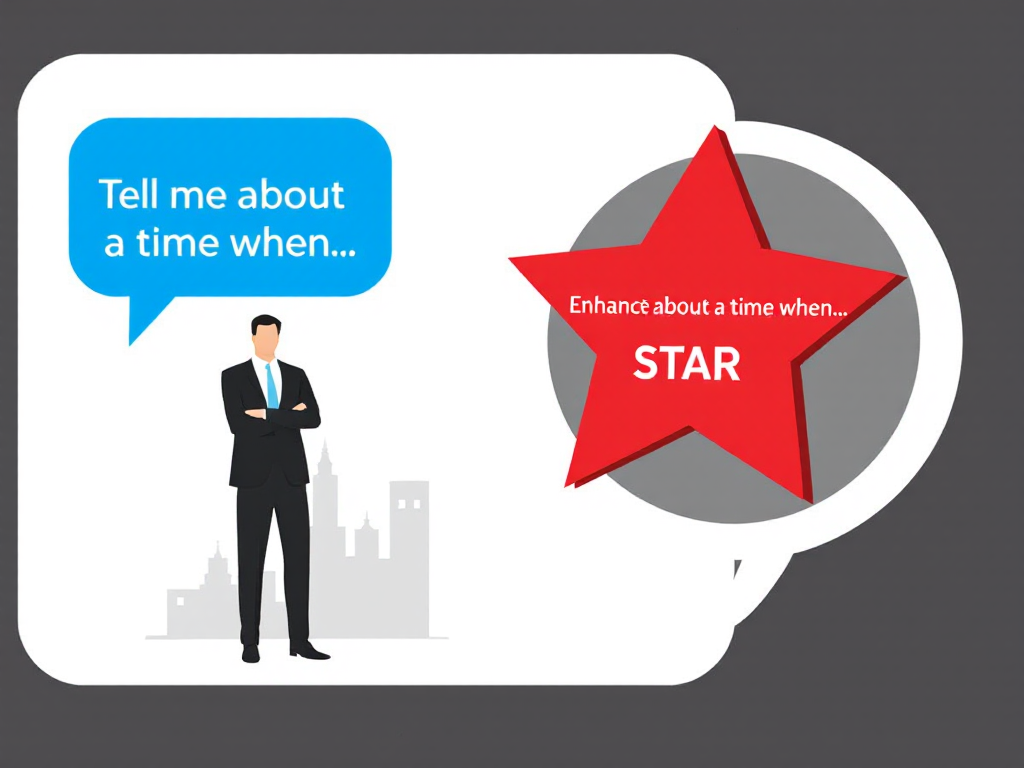
How the STAR Method Enhances Interview Success
Method #1: STAR Obstruction: STAR by example You are based on data until October 2023. She has an extensive work background, but when it comes to discussing her experiences in an interview, the process is painful and slow. Her responses often drag on without the architecture needed to have a lasting effect. In a casual chat with a friend, Lisa learns about the STAR method—structuring your answer to a behavioral interview question in a clear and concise way. It turns her responses from disjointed stories into engaging tales that illustrate what she can do and has done.
Context from the World and Personal Response
Determined to improve, Lisa tries out the STAR method in a mock interview. STAR stands for Situation, Task, Action, and Result. These are the elements that Lisa used to guide her answers.
Her first attempt faces immediate challenges. Her instinct is to go deep into each aspect of her work, but she soon comes to understand the power of compactness. Soon she learns that she can sum up these survival stories into the multiple chapters of her own life with less is more, and her intimate audience that she decides to let in wont be overwhelmed by information.
Through this process, Lisa learns a powerful lesson: structured responses not only aid in interviews but also elucidate her understanding of her accomplishments. She has to transform her perspective of STAR from a tool to answer interview questions to slang for her unique power that helps her to frame her career journey and speak about herself more clearly.
Did You Know?
Best Practices
The STAR method is a technique that enables candidates to describe their experiences in a structured manner. to get you started on STAR method interview:
- Be Succinct: While the STAR method is fairly broad, rightfully so, each part should still be as concise as possible while retaining the effective aspect of the STAR.
- Trim down to what is most relevant.
- Use Details: Use specific examples and data to support your points. Specificity is what makes your stories interesting.
- Align With the Job Requirements: Make sure your STAR stories are tailored to pull in examples that meet expectations of the job description.
Common Pitfalls
The STAR method works but there are some traps you might fall into:
- Over-Explaining: Don’t get bogged down in minutiae. Focus on the most relevant information to highlight your skills.
- Key Component Missing: You have used the STAR method in your response. Skipping steps will result in an incomplete story.
Achievement or “Aha” Moment
The true test of mastery is a high-stakes interview at a top tech company. With her STAR stories, Lisa attacks each question with confidence. She describes a particular project in which she led a team to boost social media engagement by 30% within three months. In this case, there were declining user engagement across the company's social platforms, which was a high priority issue for the marketing department. She was charged with creating a strategy to not only stop the decline but spark significant engagement growth.
Lisa walks through what she does from detailed audience analysis to making sure the content fits the audience, a new posting schedule, content types (introducing interactive content like polls and live Q&A sessions), etc.
She could see the results and the engagement metrics had been steadily climbing and there had been praise from the stakeholders about the value of her strategy.
' Interviewers commend her clarity and the tangible impact of her work, highlighting her ability to distill data into actionable insights. This tattooed, scatological breakthrough moment not only gets her the job but also kicks her up a notch in confidence in her professional capabilities: Yes, she has these leadership, strategic planning and execution skills.

All About Career & Interview
Scenario-based examples
The STAR method can improve the interview performance of a candidate greatly. Think about situations where candidates are asked questions about leadership or solving problems. They can present a concise narrative that showcases their competencies and achievements by.
For instance, if asked about a time when they resolved a conflict, candidates can explain the situation, describe their task in solving the issue, explain the steps they took, and finish with the positive outcome.
Expert Advice
There does exist a certain fluency with STAR stories, and candidates are encouraged to practice it out loud for confidence, experts say. What is also important is that they prepare a couple of STAR stories for different competencies so that they are able to adapt to the different questions the interviewers throw at them.
The STAR method not only highlights a candidate’s skills, but by using this method, it shows their ability to communicate—an essential quality for any professional.
Conclusion: What Do You Think?
The STAR method provides a framework for discussing your experiences during interviews. When candidates structure answers according to the Situation, Task, Action, Result model, they can tell their stories in a way that is logical and engaging. Not only this helps in performing better in the interview rather it also gives a clearer understanding and boosts confidence about your career achievements while talking hence providing a more heroic yet down to earth impression.
Have you used the STAR method to answer questions in your interviews? Please share your experiences or questions in the comments below. Check OfferGenie’s resources for further guidance on leveraging the STAR method and other career insights. # Curious how to take your interview skills to the Next Level? Get in touch with OfferGenie or comment below!